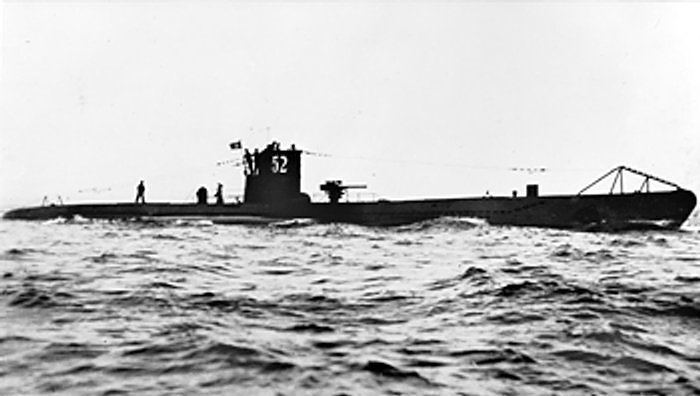Name U-102 Laid down 22 May 1939 Launched 21 March 1940 Draft 4.74 m | Ordered 15 December 1937 Commissioned 27 April 1940 Construction started 22 May 1939 Length 67 m Beam 6.2 m | |
 | ||
Fate Sunk south-west of Ireland on 1 July 1940, by a British warship Builder | ||
German submarine U-102 was a Type VIIB submarine of Nazi Germany's Kriegsmarine during World War II.
Contents
The U-boat was laid down on 22 May 1939 at the Friedrich Krupp Germaniawerft shipyard at Kiel as yard number 596, launched on 21 March 1940 and commissioned on 27 April under the command of Kapitänleutnant Harro von Klot-Heydenfeldt to serve with the 7th U-boat Flotilla from 27 April 1940 to 1 June for crew training and operationally until she was sunk on 1 July. She sank two Allied ships, claiming 5,430 gross register tons (GRT).
Design
German Type VIIB submarines were preceded by the shorter Type VIIA submarines. U-102 had a displacement of 753 tonnes (741 long tons) when at the surface and 857 tonnes (843 long tons) while submerged. She had a total length of 66.50 m (218 ft 2 in), a pressure hull length of 48.80 m (160 ft 1 in), a beam of 6.20 m (20 ft 4 in), a height of 9.50 m (31 ft 2 in), and a draught of 4.74 m (15 ft 7 in). The submarine was powered by two Germaniawerft F46 four-stroke, six-cylinder supercharged diesel engines producing a total of 2,800 to 3,200 metric horsepower (2,060 to 2,350 kW; 2,760 to 3,160 shp) for use while surfaced, two AEG GU 460/8-276 double-acting electric motors producing a total of 750 metric horsepower (550 kW; 740 shp) for use while submerged. She had two shafts and two 1.23 m (4 ft) propellers. The boat was capable of operating at depths of up to 230 metres (750 ft).
The submarine had a maximum surface speed of 17.9 knots (33.2 km/h; 20.6 mph) and a maximum submerged speed of 8 knots (15 km/h; 9.2 mph). When submerged, the boat could operate for 90 nautical miles (170 km; 100 mi) at 4 knots (7.4 km/h; 4.6 mph); when surfaced, she could travel 8,700 nautical miles (16,100 km; 10,000 mi) at 10 knots (19 km/h; 12 mph). U-102 was fitted with five 53.3 cm (21 in) torpedo tubes (four fitted at the bow and one at the stern), fourteen torpedoes, one 8.8 cm (3.46 in) SK C/35 naval gun, 220 rounds, and one 2 cm (0.79 in) anti-aircraft gun. The boat had a complement of between forty-four and sixty.
Service history
U-102's first and only patrol began on 22 June 1940. Having sunk the Castleton near the Orkney Islands on the 28th and the Clearton about 180 nmi (330 km; 210 mi) west of Ushant (often known as Ouessant, an island in northwest France) on 1 July, she was herself sunk on the same day as the latter ship by depth charges from a British destroyer, HMS Vansittart.
43 men died with the submarine; there were no survivors.
After the U-boat's sinking, Vansittart rescued the 26 survivors from Clearton.
Previously Recorded Fate
U-102 was originally believed to have been sunk in the Bay of Biscay due to unknown causes on or after 30 June 1940.
